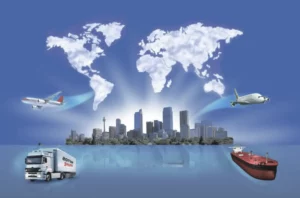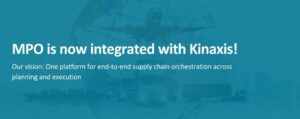
I n my last post on modernizing versus digitally transforming, I mentioned a phenomenon some of us are calling the “multi-multi” problem. The term refers to the conglomeration of IT solutions many companies operate under. As a matter of fact, I’ve recently seen a growing number of articles and white papers on “multi-party, multi-tier, multi-channel, multi-service, etc.” business realities.
If you have a hodge-podge of IT platforms assembled over several years, either within your company or bolted on or into others, you know what I mean.
The “multi-multi” problem exacerbates an already complex situation
Years ago, I was managing a service provider to a major personal computer OEM; aside from the manufacturing, we managed most of their supply chain. They would sell their PCs and promise a delivery date to customers when orders came in. Problem was the computer shipped from one location, and accessories from others, yet they had to be coordinated to land on the customer’s doorstep at the same time. We referred to this to this many-to-one solution as “merge-in-transit.” Terrifically difficult to achieve at the time because we were trying to coordinate scattered and disparate systems. The parcel carrier systems were also nothing like today’s solutions. There was no chain of custody, real-time tracking and tracing, constraint identification, or predictive delivery assurances. Despite our best efforts to synchronize our collective IT systems, our results were mixed. To satisfy our customer, we ended up moving to a business model managing a Supplier Owned Inventory Hub with hundreds of vendors where we would assemble or kit and ship their orders on demand.
 Perhaps we should thank Amazon for pushing carriers, postal agencies, and logistics companies into making the massive investments required to report and track a shipment’s every move.
Perhaps we should thank Amazon for pushing carriers, postal agencies, and logistics companies into making the massive investments required to report and track a shipment’s every move.
But even today, there’s still a lack of end-to-end supply chain visibility; about half of all organizations don’t really know what’s happening at key integration points across their business transactions. The one-to-many problem has become a many-to-many challenge, requiring sophistication that can feel overwhelming. So many things can happen so fast it’s a gargantuan task to keep track of all the moving parts and how they affect outcomes.
Not dealing with the “multi-multi” is putting you behind
Consider this, 85% of companies said they are losing money to integration issues related to their supply chains. Unless your company is digitally native (and most aren’t) integration becomes a necessity. Furthermore, according to MIT adjunct professor Michael Stonebraker, many enterprises spend about 95% of the IT budget on running legacy code and have their best people spending their time on things like maintenance.
Switching to cloud platforms solves some of these issues, but even “lifting and shifting” to the best cloud-based systems on the market can be a nerve-wracking experience. You may encounter technical challenges, implementation delays, cost overruns, lower than promised synergies, and increasing doubts from your own business operators. And the hidden liability of technical debt can undermine efforts.
I became familiar with technical debt years ago as the president and COO of a fast-growing dot.com company where this was a big problem for us. The term “technical debt” refers to the off-balance-sheet accumulation of all the technology work a company needs to do. Simply by being in business, an organization accrues some level of tech debt; it will always have technology of different ages from different sources serving different purposes.
Uncomplicate things – move with today’s momentum
 One way to uncomplicate the multi-multi and shed technical debt and the restricting strings of the annual capex budgeting exercise is to successfully apply approaches from your manufacturing brethren. That is, think continuous improvement and sustainability instead of “projects” with a defined timetable and lifecycle.
One way to uncomplicate the multi-multi and shed technical debt and the restricting strings of the annual capex budgeting exercise is to successfully apply approaches from your manufacturing brethren. That is, think continuous improvement and sustainability instead of “projects” with a defined timetable and lifecycle.
While there are clearly many benefits to tackling the “multi-multi” reality of supply chain complexity, determining the right technology strategy for your businesses is not always clear and easy, but there are a few key and fundamental changes that will set you on the path of true transformation:
- Go from singular projects to ongoing, long lived missions
- Shift from temporary, siloed teams to standing cross-functional teams
- Design a plan for the company and not for a specific function within the company
- Switch your thinking from capex one-off funding to opex continuous and dynamic OKRs
If you’re a team leader trying to tackle these challenges, it’s difficult to describe what it feels like to think you know what you need, to be uncertain, and to find a solution provider that understands that ambiguity and will get you over the goal line.
Embracing the cloud is becoming more of an impactful business differentiator and less of an IT infrastructure decision with positive implications:
- Improved speed and agility at about 90% improvement in time to market
- Easier innovation, as it takes approx. 95% less time to add digital features
- Efficient scalability, at around 10-15% savings from capacity utilization
- Reduced risk, at about 90% outage reduction
Moving to the cloud also offers incredible opportunity to shed that technical debt at a far lower cost of ownership and approach the multi-multi reality in a far more productive way that fosters collaboration and efficiency across the network. In my next posts, we’ll take a deeper look at the challenges of managing complex, multi-tier supply chains, as well as the trending technology strategies that are helping businesses overcome the multi-multi problem – at a lower total cost of ownership.
Want to learn more about streamlining across multiple systems, people, and processes? A unifying platform will work with your current infrastructure to turn supply chain complexity into a powerful advantage. Learn how a cloud platform can help you mitigate risk and impact, control cost, and maintain operational excellence under changing conditions. Download a copy of the whitepaper below.
You can also speak directly to our team about your multi-multi challenges and what can be done to address them by reaching out to info@mpo.com or requesting a demo today
- Bitcoin
- blockchain
- blockchain compliance
- blockchain conference
- Business Advice
- coinbase
- coingenius
- Consensus
- Cost Management
- crypto conference
- crypto mining
- cryptocurrency
- decentralized
- DeFi
- Digital Assets
- Digital Transformation
- ethereum
- machine learning
- MPO Blog
- non fungible token
- plato
- plato ai
- Plato Data Intelligence
- Platoblockchain
- PlatoData
- platogaming
- Polygon
- proof of stake
- Supply Chain Complexity
- W3
- zephyrnet













